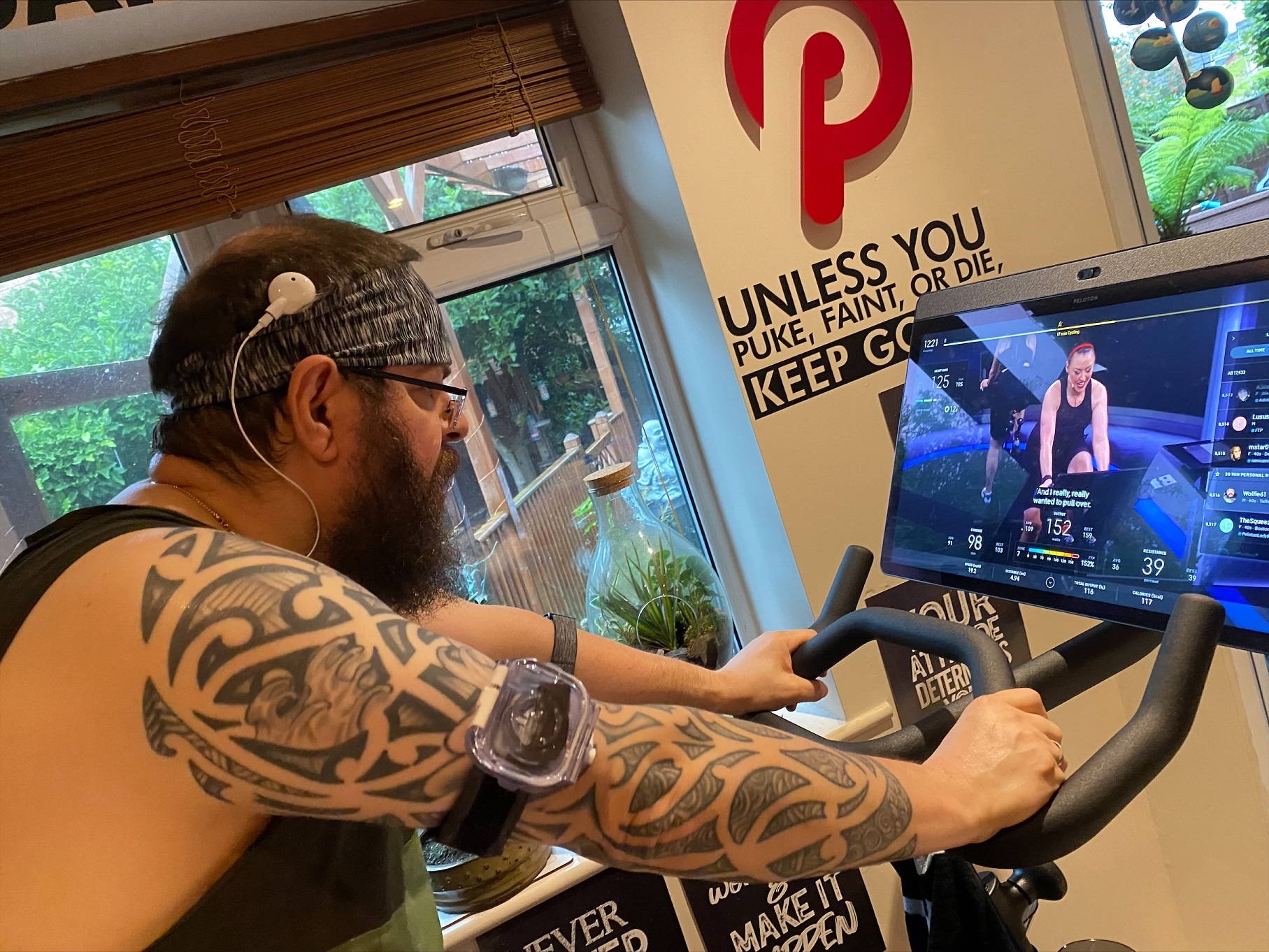
Using Microsoft Azure and its AI capabilities, Peloton develops live subtitles for members who are deaf or hard of hearing
That day in early February was for David Wolfe Rose like all the Christmases at once, like getting a new kitten, like every special day bundled into one.
Rose had readied a room at the back of his house in preparation for the delivery. That morning, he eagerly waited. Soon two men arrived, put together Rose’s new indoor stationary Peloton Bike and showed him how to use it. Rose was, well, beyond elated.
“It was like getting married again,” he says. “If I’m honest, it was like having another baby. It was just very exciting when the bike arrived.”
Peloton members are known for their dedication to the brand’s energetic online classes. But to Rose, the high-tech bike was about more than just a challenging workout. It promised connection and community. It was a gateway to a place he could belong to.
Rose, who is deaf, bought the bike after learning that Peloton offered subtitles for its on-demand classes. More recently, using Microsoft’s Azure Cognitive Services speech-to-text and translation technology, the company launched live subtitles in September for its live classes, improving accessibility for members who are deaf or hard of hearing.
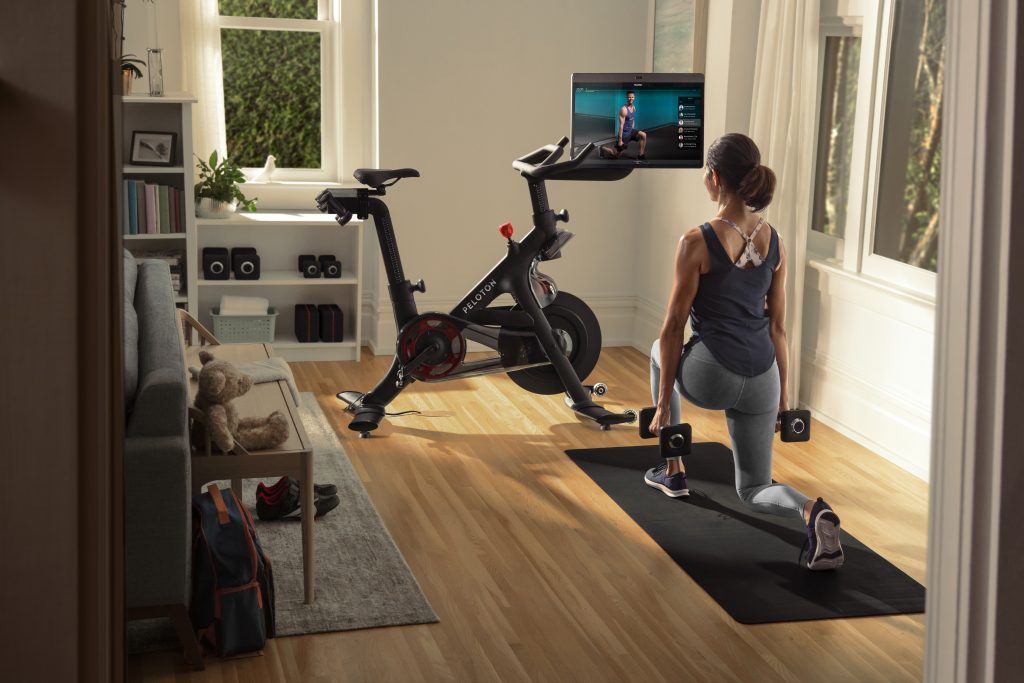
Peloton members are known for their dedication to the company’s energetic classes. (Courtesy of Peloton)
Suresh Bathini, Peloton’s vice president of software engineering, says the New York City-based company decided to work with Microsoft to expand accessibility to its platform. He knew after hearing from a member who would sign entire live classes for her partner, who is deaf, that doing so was the right move for the Peloton community, he says.
“That prompted us to provide subtitles for people who are taking live classes. We want to provide immersive experiences that are accessible to all users,” Bathini says.
Previously, the company had provided subtitles only for its on-demand classes. But that meant that the signature live experience so valued by members wasn’t available to those who are deaf or hard of hearing.
While the decision to introduce live subtitles was clear, executing on that vision proved a bit murkier. A primary challenge was determining how automated speech recognition software could facilitate Peloton’s specific vocabulary, including the numerical phrases used for class countdowns and to set resistance and cadence levels. Latency was another issue – subtitles wouldn’t be very useful, after all, if they lagged behind what instructors were saying.
Bathini says Peloton chose Azure Cognitive Services because it was cost-effective and allowed Peloton to customize its own machine learning model for converting speech to text, and was significantly faster than other solutions on the market. Microsoft also provided a team of engineers that worked alongside Peloton throughout the development process.
“Having a support system, especially on the engineering side and software side, helped us accelerate the solution,” Bathini says. “It was a very collaborative process.”
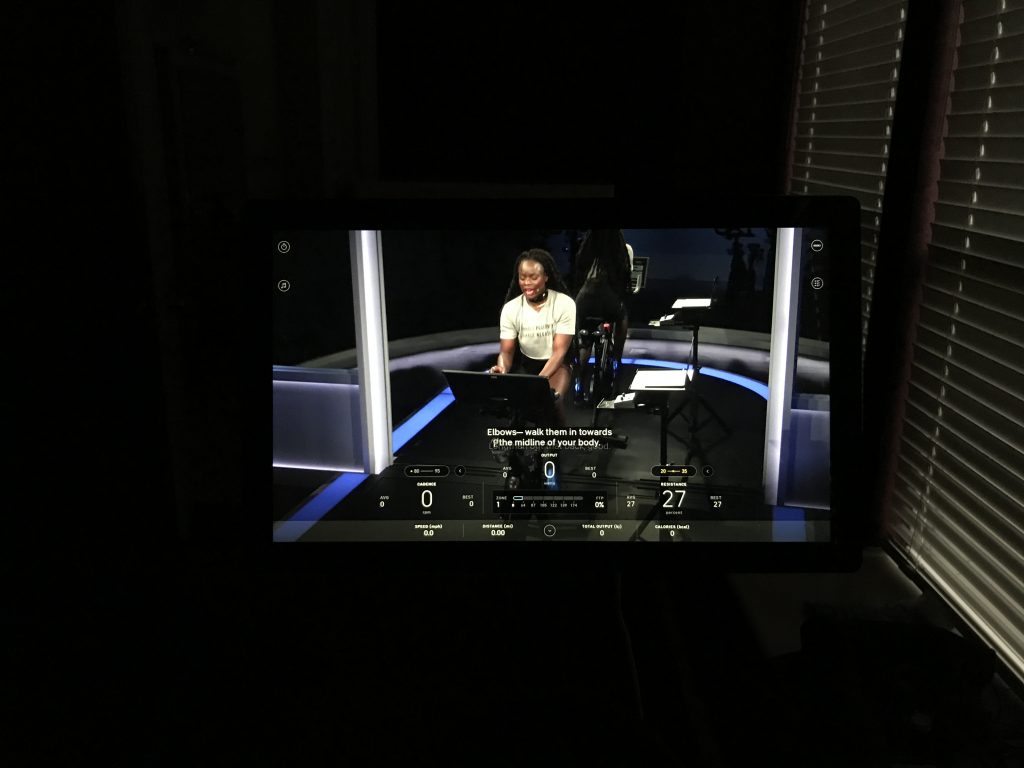
Peloton launched live subtitles in September 2021 after hearing from a member who would sign entire live classes for her partner, who is deaf. (Courtesy of Meryl Evans)
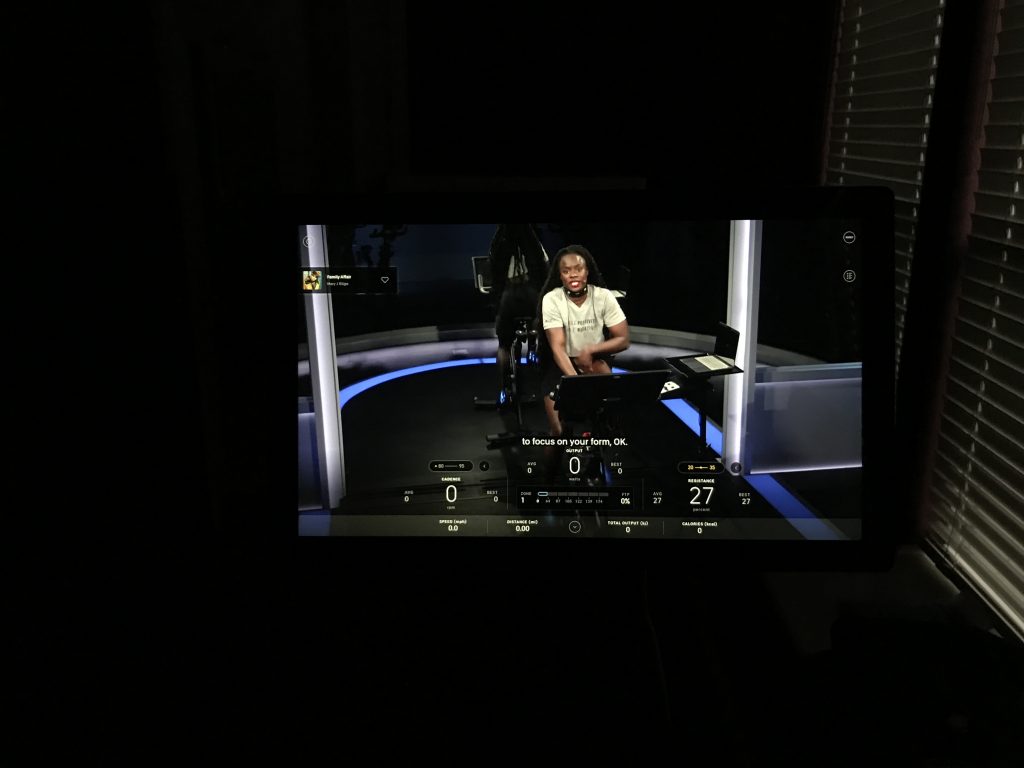
Live subtitling is so far only available in English, but the goal is to make Peloton’s classes as broadly accessible as possible. (Courtesy of Meryl Evans)
Eric Boyd, corporate vice president, Microsoft Azure AI, says Peloton’s use of Azure Cognitive Services is a great example of using artificial intelligence to break down barriers and address inequities.
“It’s terrific to see how Peloton is embracing the power of AI to make their platform more accessible for everyone,” he says. “Using Cognitive Service for Speech, part of the Azure AI platform, Peloton was able to develop and implement live subtitles for its classes, creating a more accessible and engaging experience for its member community, especially for those who are deaf or hard of hearing.
“This collaboration perfectly embodies our mission to empower every person and every organization on the planet to achieve more.”
For Rose, those subtitles on his bike’s display screen have been nothing short of transformational. He’d joined several gyms over the past 20 years, working with personal trainers and lipreading their instructions and guidance. But he couldn’t interact much with other gym members, other than the occasional smile or thumbs-up. After a while, feeling isolated and left out, Rose’s motivation would invariably fizzle and he’d quit going.
“I always felt a little bit excluded at gyms, but with Peloton, it makes me feel like I’m 100% part of the community because I’m able to take part and follow what’s going on,” says Rose, who lives in Telford, a town in central England.
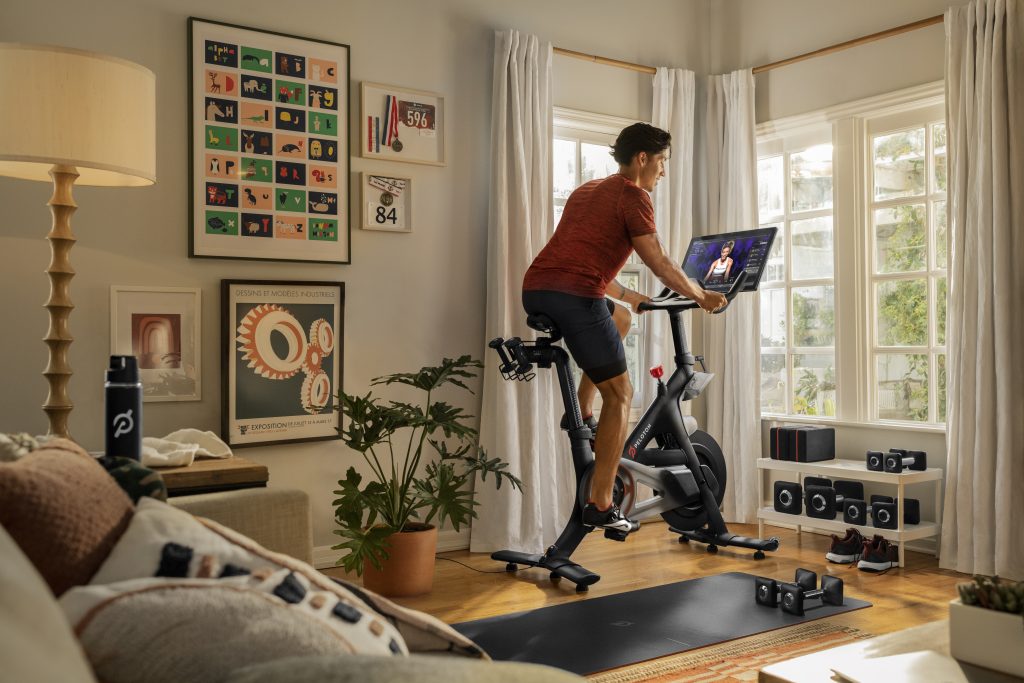
Peloton classes range from cycling to running, yoga and strength training. (Courtesy of Peloton)
His lack of motivation has evaporated, along with about 20 pounds. Since February, Rose has racked up 900-plus (and counting) rides, joined a Peloton Facebook group and regularly chats online with other Peloton members about topics ranging from equipment issues to weight-loss goals.
“It’s a little community, which is nice,” he says.
When Rose first received the bike, he tried live classes because he wanted the immediacy and sense of connection. He could watch the leaderboard that displays participants’ output and see where he ranked, give another member a high-five and most importantly, watch for the shout-out he hoped to get from the instructor.
Later, Rose would go back and do the class over again with subtitles just to see if he got a shout-out. As of early October, he was still waiting and hoping. But without subtitles, Rose could only watch the instructors and try to copy what they were doing. The introduction of live subtitles, he says, “just made me absolutely ecstatic.
“Now I’ve got the opportunity to do the class live and wait for that shout-out, rather than having to go back and watch it a second time,” says Rose, 60, a senior lecturer in deaf studies and British Sign Language/English interpretation at the University of Wolverhampton.
Meryl Evans previously worked out at a fitness studio for about four years, but like Rose, was ready for a change and wanted more guidance in her workouts. A coach at the studio would give Evans, who is deaf, a printed sheet of instructions to follow along. But they were basic and lacked the sort of detail she wanted – flatten your back, tighten your core – and that maximizes workouts and can help prevent injuries.
When the pandemic hit and gyms closed, Evans decided to look for a subtitled workout she could do at home. Workouts without subtitles weren’t an option – though Evans’ eyes are her “number one listening tool,” she finds it difficult to lipread over video, let alone while focusing on a workout.

Meryl Evans belonged to a fitness studio before switching to Peloton for its subtitles and guided workouts. (Courtesy of Meryl Evans)
Evans tried out Peloton and a competing company and liked Peloton’s variety of classes, ranging from cycling to boot camp and yoga, and its diversity of instructors. But it was Peloton’s subtitles, which were more visible and easier to read than the other company’s, that sealed the deal for her.
“My workouts are now a lot more efficient because I have those instructions in subtitles,” says Evans, 51, a digital marketer and accessibility consultant who lives in Plano, Texas.
“And it’s made a huge difference. My back doesn’t hurt as much as it did because of those instructions.”
A runner and lifelong sports enthusiast, Evans started with a treadmill but soon switched to a Peloton Bike she got through the company’s Comeback Program, which recognizes members who have overcome adversity.
Like many people, both Evans and Rose like working out to music. Evans is a fan of Broadway, especially “Hamilton,” and discovers new music primarily through subtitles in Peloton classes or on TV shows. Rose leans toward ‘80s rock tunes, loves the group Queen and likes to crank his wireless speaker loud enough to feel the beat. Knowing what song is playing during workouts provides an additional boost, both say.
“Even though I can’t hear it, if I know a song, my head will play it,” Evans says. “I’m hearing it in my head as I ride.”
Evans and Rose hope Peloton will add song titles to its live subtitling, something Bathini says the company is looking at doing, and Evans would also like to see the addition of an instructor or two with a disability. Live subtitling for Peloton classes is so far only available in English, but the goal is to make Peloton’s classes as broadly accessible as possible, Bathini says.
“We want to make fitness accessible to all our members. Our mission is really to drive the future of fitness for the world through connected experiences,” he says.
Both Evans and Rose praise Peloton for taking steps to meet the needs of people with disabilities and say other companies, in the fitness industry and beyond, should follow suit. Subtitles are used even by people who aren’t deaf or hard of hearing, Evans points out (ever watched a football game in a loud pub?), as are devices originally designed for people with disabilities, such as elevators.
Peloton offering subtitles “makes a difference, because it shows the company is serious about accessibility,” Evans says. “The fitness industry has a long way to go, but Peloton is probably ahead of the pack because of what they’re doing with subtitles.
“I’m really loyal to Peloton,” she says. “I have no desire to change.”
Nor does Rose, who finally found his workout mojo via a high-tech, internet-connected bike and a community of like-minded folks. Even if other fitness companies follow in Peloton’s footsteps, he plans to stick with them out of “respect and loyalty.”
And he has another reason to stay engaged. One day in late October, Rose got on his bike for a 30-minute ride featuring songs from the 2010s. As the class got underway, a caption popped up. It was the long-awaited shout-out, congratulating Rose on his 900th ride.
In that little room, on the bike that had brought him connection and a newfound passion, Rose whooped with joy.
He’s already thinking about his thousandth ride.
Top photo: David Wolfe Rose works out on his Peloton Bike+ at his home in Telford, England. (Courtesy of David Wolfe Rose)

